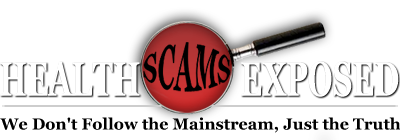 Basking in the warm sunshine is a favorite pastime of many. But, for years, doctors have been warning of the dangers linked with exposing your skin to the sun’s glorious rays.
Basking in the warm sunshine is a favorite pastime of many. But, for years, doctors have been warning of the dangers linked with exposing your skin to the sun’s glorious rays.
Now, buzz is growing about a different kind of light. While red light therapy, RLT, might remind you of a beloved science fiction book or movie, it’s a real medical treatment increasing in popularity. Believed to be able to help a variety of health issues, RLT might soon become your go-to medical treatment of choice.
RLT utilizes red low-level wavelengths of light to treat different conditions. In the 1990s, scientists used RLT to help grow plants in space. They discovered that the concentrated light from red light-emitting diodes, LEDs, assisted in promoting the photosynthesis and growth of plant cells. RLT was then studied for its possible applications in medicine.
This innovative treatment is thought to work by manufacturing a biochemical effect in your cells that strengthens your mitochondria. The mitochondria are referred to as the powerhouse of a cell. This is the place where the cell’s energy is created. Adenosine triphosphate, ATP, is the energy-distributing molecule located in the cells of all living things. RLT increases the function of the mitochondria causing a cell to produce more ATP. With enhanced energy, your cells can work harder, rejuvenate themselves, and repair damage.
Since the initial experiments with RLT in space, thousands of laboratory studies and hundreds of clinical ones have been conducted to determine if this form of treatment provides medical benefits. While numerous studies have shown promising results, the advantages of RLT are still controversial.
For instance, the Centers for Medicare and Medicaid Services, CMS, has decided enough evidence doesn’t exist to prove that these devices are more adept than currently available treatments for pain, ulcers, and wounds.
While additional research may be warranted to win some doctors over to RLT, evidence already exists to suggest this state-of-the-art treatment might provide the following benefits:
- Promotes tissue repair and wound healing
- Diminishes psoriasis lesions
- Improves hair growth in those with androgenic alopecia
- Helps with short-term relief of morning stiffness and pain associated with rheumatoid arthritis
- Improves the health of joints in those suffering from degenerative osteoarthritis of the knee
- Prevents recurring cold sores caused from herpes simplex virus infections
- Helps in the short-term treatment of carpel tunnel syndrome
- Helps repair sun damage
- Improves the skin’s complexion and builds collagen to minimize wrinkles
- Helps lessen scarring
- Relieves inflammation and pain in those with an Achilles tendon issue
- Lessons some of the side effects of cancer treatments, such as oral mucositis
Michael R. Hamblin, PhD, associate professor of dermatology at Harvard Medical School and a principal investigator at the Wellman Center for Photomedicine at Massachusetts General Hospital, stated, “The number of conditions red light can treat is ‘continuously expanding.’”
Hamblin is also on the scientific advisory board for Joovv. Joovv is a company that markets medical-grade light therapy devices. Joovv’s co-founder, Scott Nelson, revealed that many of the company’s customers seek help for three distinct issues: physical performance, joint pain and inflammation, and skin health.
According to Nelson, clients include Olympic athletes and NFL players. Nelson remarked, “What’s interesting is that most of our customers will purchase a device for a specific thing, like muscle recovery, for example. But they’ll notice other benefits through consistent use, like ‘glowing’ skin, better cognitive function, enhanced sleep, and increased libido.”
Dr. Caitlyn Mooney, a member of the American Medical Society for Sports Medicine and a sports medicine doctor at University Medicine Associates in San Antonio, revealed, “A small study showed that ankle sprains treated with light therapy had less swelling at 24, 48, and 72 hours compared to rest, ice, compression, [and] elevation.”
She added to Healthline, “Another small study showed people treated with light therapy returned to full weight bearing earlier after ankle sprain.”
Mooney would like to see larger studies comparing RLT to other treatments, or none at all, to ascertain whether people’s pain is minimized, they can return to their activities sooner, and if tissue healing actually takes place.
Unlike opioids and other prescribed medications, RLT appears to be a safe treatment alternative. However, some people have reportedly been burned and blistered from using RLT units. Some experienced burns after falling asleep with the unit on while others were hurt due to device corrosion or broken wires.
You can receive RLT treatment at spas, sports injury clinics, naturopath clinics, chiropractors’ offices, and tanning salons. You can even invest in a light therapy device of your own to use at home. Before starting any new treatment regime, consult with your doctor.
